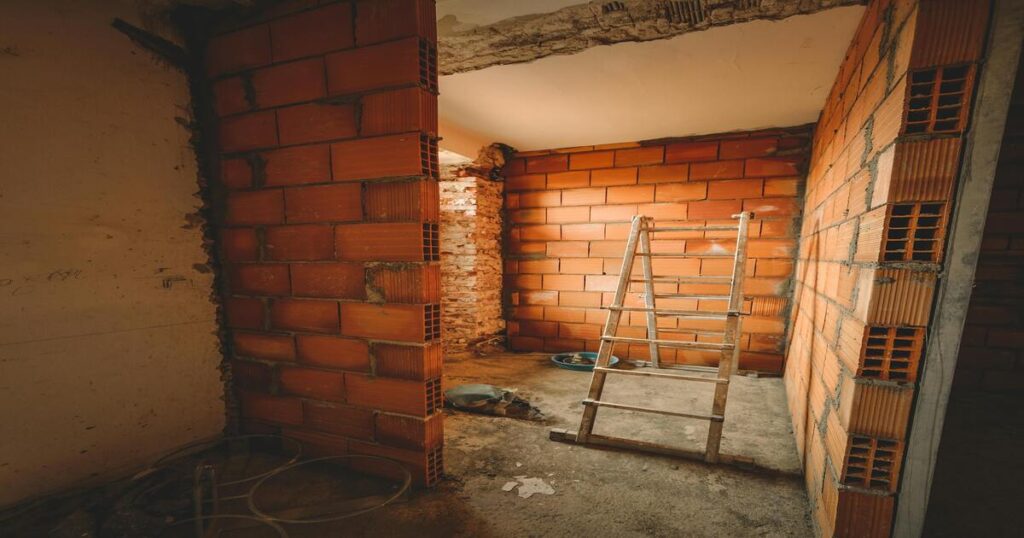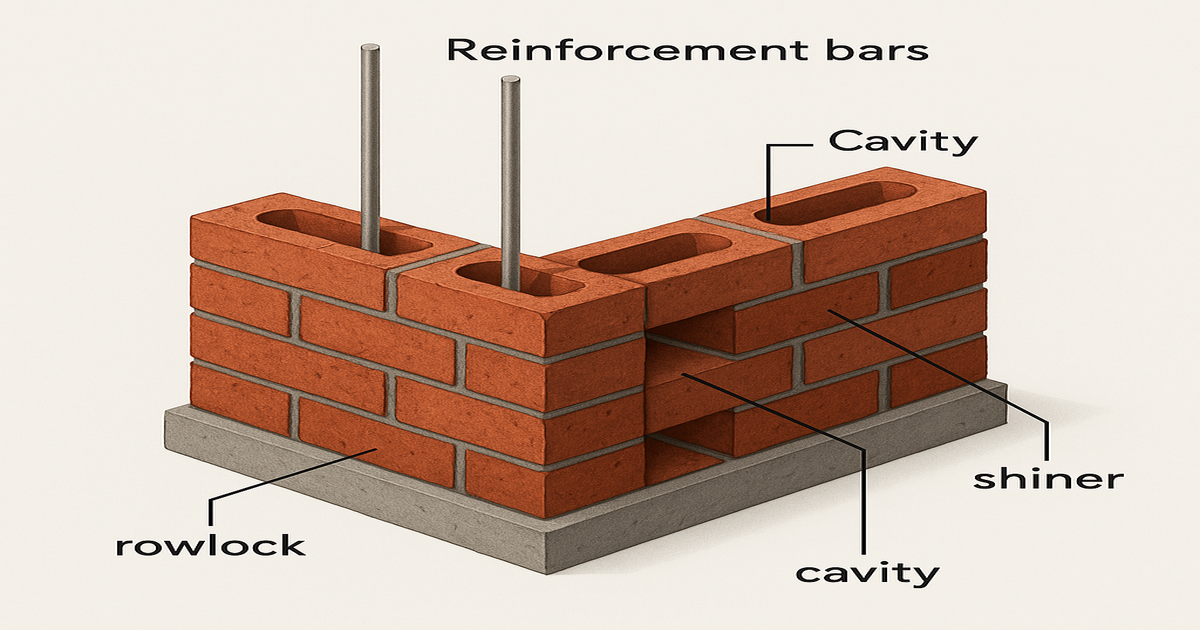A rat trap bond is a type of modular masonry bond in which bricks are set in a vertical position leaving a cavity between the two walls of brick and maintaining the same wall thickness as that of the conventional brick masonry wall. It is also known as a Chinese brick bond.
This type of masonry bond aims to minimize the amount of bricks and mortar required vs the English/Flemish bond due to the cavity created in the wall.
Rat Trap Bond Introduced in Kerala during the 1970s by architect Laurie Baker, this technique gained popularity due to its cost-effectiveness, minimal material usage, and superior thermal performance compared to traditional masonry walls, all while maintaining structural integrity. In this paragraph, we discuss the material basis, construction, advantages, and disadvantages of rat trap bond masonry.

Selection of Bricks
The standard brick that are set for the selection of bricks is of most importance as less number of bricks are used in the construction of rat trap masonry. where fewer bricks are used compared to conventional methods.
- The size of the bricks used in construction must be of a standard size and irregular size of bricks is not accepted. The acceptable sizes of bricks in Indian construction field are – Length 220-250 mm, Width 100-115mm and Height 65- 75mm.
- It is essential that bricks have sharp edges and perfectly rectangular in size also its edges and corners of brick should be straight.
- A consistency in size is particularly important for brick as rat trap masonry follow a modular system that relies on uniformity to deliver both strength and a clean finish.
Construction of Rat Trap Bond
- In this technique the bricks are placed in a positioned vertical so that 110 mm face is visible from front elevation, rather than the 75mm face (considering brick of standard size 230 X 110 X 75 mm).
- As the width of the wall is kept as 230mm, results in the formation of a hollow cavity within the wall.
- However, the first and the last layer of the masonry are built using conventional solid brickwork.
- Solid masonry (without cavities) is used at the sill, lintel, and sides of openings to securely fix door and window frames made up of solid masonry.
- Vertical and horizontal reinforcement bars are put into the cavities to provide the strength of the masonry.
- With proper planning, Electrical conduits and plumbing pipes, with prior planning, can be installed within the cavity, enhancing the overall aesthetics.
Advantages of Rat Trap Bond
- The cavities within the masonry serve as thermal insulators. Thus, the interiors spaces remain cooler in summer and in winter.
- Rat Trap masonry uses fewer bricks and mortar reducing cutting overall masonry costs by up to 30% compared to traditional brickwork methods.
- The number of bricks used in the construction of Rat trap masonry requires only 470 bricks for construction, whereas, in conventional masonry, it is 550.
- Walls constructed using rat trap masonry can be used for both load-bearing applications and as thick partition walls.
- When left exposed, the rat-trap bond, creates an attractive wall finish surface and the cost of plastering and painting, thereby reducing finishing costs.
- Since this type of masonry contains about 30% cavities, the dead load of the structure is reduced which in turn allows for lighter structural support elements like columns and footings.
- For enhanced structural safety, reinforcement bars can be inserted through the cavity extending down to the foundation.
- Numbers of buildings built decades ago stand as a proved that this type of walling technology is durable and the maintenance costs are low.
Disadvantages of Rat Trap Bond
- Due to the formation of gaps in the masonry, the building does not provide good sound by insulations.
- Skilled labor is very important for required to construct this type of masonry called Rat Trap Bond.
- Further cleaning of external surface of the bond is required if not plastered.
- Special care, ensure quality work and attention to be given while designing and constructing rat trap bond masonry.

